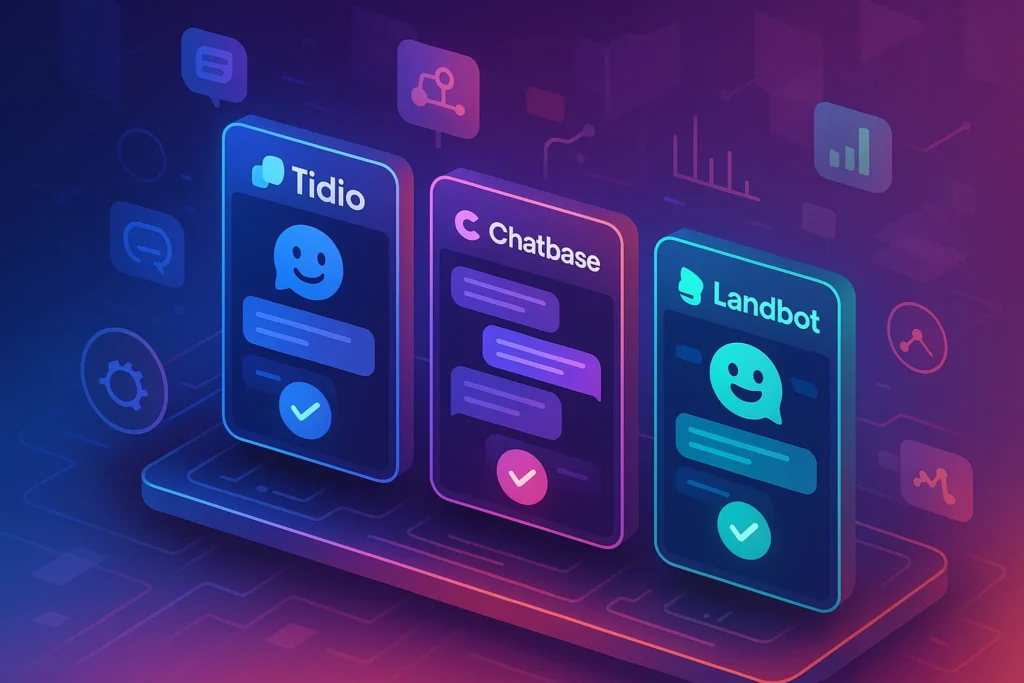🎨 Intro
You don’t need another meeting to explain a four-minute bug. You don’t need a 20-reply thread to clarify a two-step workflow. You need a clean screen recording, quick camera overlay, crisp captions, and a link your teammate can open without logging into three different dashboards. Loom popularized this ritual, but as it grew, so did the gripes: capped free tiers, rising prices, throttled exports, and features teams don’t actually use.
The good news is that 2025 is a golden moment for async video. A new wave of tools—leaner, cheaper, and more focused—cover the core workflows teams do daily: annotating a pull request, hand-off from product to support, prospecting with short sales videos, and teaching micro-tutorials that embed directly into docs. In this guide, we’ll break down what to look for, review the best Loom alternatives you’ll actually enjoy using, and share a no-nonsense rollout plan that sticks.
Along the way, we’ll link to playbooks that make these recordings pay off. If your short videos are part of a larger marketing engine, fold them into the assets from our Video Marketing Toolkit. If you want to clip, enhance, or caption in bulk, jump to our review of the Best AI Video Editing Tools Reviewed or Best AI Video Editors for Non-Technical Creators. And if you use async video to replace status calls, grab facilitation patterns from Pro Tips for Better Virtual Meetings. NerdChips’ take: the winners aren’t just cheaper than Loom—they’re faster at the exact job you need done.
💡 Nerd Tip: Don’t obsess over feature lists. Obsess over share friction. If your tool doesn’t produce a shareable link in under five seconds that plays smoothly on mobile, keep searching.
🧭 Why Async Video Matters (More Than You Think)
Async video isn’t a “nice to have.” It’s a direct brake on calendar creep. Teams that move demos, status updates, and small walkthroughs to short recordings consistently report calendar relief and clearer hand-offs. A two-minute clip beats a thirteen-person stand-up when the update is linear, visual, and doesn’t require debate. The key is precision: make it short, searchable, and actionable. The right tool should nudge you into that behavior automatically.
There’s also a trust benefit. A brief face-cam overlay is powerful in sales and support—people buy from people. If you’re using short videos to warm up a funnel, tie the workflow to your attribution stack (UTMs on the share link, or CRM auto-logging), then measure the lift. Want to go deeper on funnel design? Pair your async videos with our Top Content Creation Tools for Social Media for speedy repurposing.
Finally, async video is excellent documentation. A ten-second “how to re-run this script” recording embedded in a runbook beats a thousand words. That’s where integrations matter: Slack unfurls, Notion or Confluence embeds, and timestamped comments so feedback stays glued to the second it matters. If your tool makes those easy, you’ll actually systematize knowledge—without hiring a technical writer.
💡 Nerd Tip: Keep recordings under 120 seconds. If you can’t, you’re mixing two updates. Split them.
🧪 What to Look for in Loom Alternatives
Start with recording quality and stability. 1080p is the baseline; 4K is nice but overkill for most training. More important: lossless cursor capture, smooth camera overlay, and reliable dual-monitor handling. Jitter or audio drift ruins trust faster than any missing feature.
Next, insist on commenting and collaboration on the timeline. If teammates can drop timestamped notes, request trims, or add lightweight reactions, you’ll eliminate back-and-forth and keep decisions contextual. Tools that treat comments as first-class objects usually also handle permissions and sharing more gracefully.
Then consider integrations and embedding. Slack unfurls, Notion/Confluence/Linear cards, and CRM logging are where time gets saved. A tool that autogenerates transcripts with speaker labels and pushes them to your docs is “free SEO” for internal knowledge. If you plan to use these videos externally (sales, marketing), check CRM auto-logging and analytics depth—opens, watches, drop-off curves, and geo.
AI extras can be the difference between “nice demo” and “daily habit.” Live or near-real-time transcription, auto-silence removal, filler-word deletion, one-click chapters, and AI-generated summaries turn a rough take into a tight clip with almost no editing. It also makes your clips scannable and accessible.
Last, look at pricing and free tiers through the lens of your use case. Engineering teams that record dozens of two-minute bug walkthroughs need unlimited recording, not flashy templates. Sales teams care about branded landing pages, CTA buttons, and per-viewer analytics. Creators care about quick stylization and fast export to Shorts/Reels. Buy the plan that tracks to the job, not the brand.
💡 Nerd Tip: Run a “share friction test.” New teammate → new browser → open the link on mobile. If they hit a paywall, heavy login, or stutter, that’s a red flag.
🏁 Top Loom Alternatives (2025) — What They’re Great At
🎯 Claap — Async-First Collaboration for Product & Ops
Claap leans into “video as a conversation.” You record a screen or camera, share a link, and your team drops time-coded comments or decisions right on the timeline. This shines in design reviews, QA walkthroughs, and any scenario where you want decisions to live with the footage. AI features—autocaptions, highlights, and meeting “cuts”—speed cleanup. Where Claap stands out is the feeling that each video is a mini-workspace: you can route comments to owners, mark threads resolved, and keep momentum without a meeting.
Best for: Product squads, design reviews, internal docs that need discussion.
Watch-outs: Editing depth is intentionally lightweight; if you need heavy cuts, pair with an editor or export to a pro tool.
💌 Sendspark — Personal Videos for Sales Outreach
Sendspark makes one-to-one and one-to-few sales videos feel personalized without toil. Record, add a first-frame personalization overlay (e.g., the prospect’s company site in the background), and ship. You get branded landing pages, CTA buttons, and analytics that tie back to your CRM so reps can follow up at the perfect moment—when someone actually watches. For teams migrating from Loom in sales, this is a natural upgrade because the page is the pitch, not just the video.
Best for: Sales development, customer success, post-demo follow-ups.
Watch-outs: Not a deep team collaboration environment; different job than product review tools.
💬 Bubbles — Record + Threaded Comments for Teams
Bubbles is minimal by design. It blends quick recording with asynchronous comment threads, turning your clip into a conversation that feels like chat but stays anchored to the media. The simplicity reduces resistance for non-tech colleagues: click, record, send. If your team’s biggest barrier is adoption—not features—Bubbles is often the easiest first step away from meetings, especially when paired with Slack.
Best for: Teams new to async, cross-functional announcements, support hand-offs.
Watch-outs: Analytics and branding are basic compared to sales-oriented tools.
📈 Vidyard — Enterprise-Ready Sales & Analytics
Vidyard is the heavyweight for go-to-market teams. Think hardened security, SSO, polished share pages, calendar CTAs, per-viewer analytics, A/B thumbnail tests, and strong CRM/marketing automation integrations. If your VP Sales wants proof that async video moves pipeline, Vidyard makes that conversation simple: you can see who watched, how long, and whether they clicked. When you’re replacing “Loom links in Gmail,” this is a major quality-of-life upgrade.
Best for: Sales/CS at scale, marketing campaigns that demand analytics and governance.
Watch-outs: Heavier admin and pricing; overkill for a five-person studio.
🎨 Tella — Creator-Friendly, Fast, and Stylish
Tella is the crowd-pleaser for creators and educators. It has a modern UI, polished templates, quick layouts, and smart defaults for camera + screen compositions. You can make tutorial-style videos that look great out of the box, then export for YouTube Shorts or embed in course platforms. If your complaint about Loom is aesthetic and editing speed, Tella feels like a breath of fresh interface.
Best for: Creators, micro-courses, onboarding walkthroughs that must look sharp.
Watch-outs: Collaboration is lighter than Claap; analytics lighter than Vidyard.
✂️ Descript — Record, Transcribe, Edit by Editing Text
Descript is a different animal: it’s a recorder and an editor with a text-first timeline. Delete filler words in one click, remove silence, retake lines with overdub, and export to any format quickly. If your recordings need more polish—intros/outros, b-roll, or heavy cuts—Descript replaces the “Loom + export + pro editor” chain. It also shines for podcasts and narrated tutorials where the script matters.
Best for: Teams who want editing power without a steep learning curve.
Watch-outs: Collaboration is via comments/shares, not the threaded decision workflows of Claap; sales analytics are nil.
💡 Nerd Tip: For many teams, the winning combo is Claap for collaboration + Descript for cleanup. Record in Claap, export the final winners to Descript when they need that extra shine.
Quick Comparison
| Tool | Core Strength | Collab Depth | Analytics | Share Friction | Best Fit |
|---|---|---|---|---|---|
| Claap | Timeline comments & decisions | High | Medium | Very Low | Product/design squads |
| Sendspark | Personalized sales pages | Low | High | Low | SDR/AE outreach |
| Bubbles | Simplicity & adoption | Medium | Low | Very Low | Teams new to async |
| Vidyard | Enterprise analytics & CTAs | Medium | Very High | Low | Sales/CS at scale |
| Tella | Creator-friendly styling | Medium | Medium | Very Low | Creators/education |
| Descript | Text-based editing | Medium | Low | N/A (export) | Polished tutorials/podcasts |
⚡ Stop Overpaying for Loom—Upgrade the Workflow
Try creator-friendly, async-first tools. Start with Claap or Tella for collaboration and polish—pair with Descript when you need pro-level cleanup.
🧩 Step-by-Step: Choosing the Right Tool (and Making It Stick)
1) Define the job. Write one sentence: “We need to reduce stand-ups,” “We need sales intros that convert,” or “We need repeatable training for new hires.” The job tells you exactly which column in the table matters.
2) Trial two tools against the same script. Record the same 60-second update in each contender. Time the flow: record → shareable link → teammate reaction. The fastest end-to-end experience usually wins.
3) Test share friction on clean devices. New user, incognito browser, mobile network. You’re testing reality: how your stakeholders actually receive the clip. Count clicks and seconds to first frame.
4) Check your stack fit. Does Slack unfurl a playable card? Does Notion embed well? Can your CRM auto-log opens? If you plan to clip for social, does the tool export clean 9:16 without letterboxing? If your async videos will feed marketing, don’t forget to pass UTM parameters described in our Building a Video Marketing Toolkit.
5) Roll out with one weekly ritual. For example: “Every Friday, PMs post a 90-second ‘This week, next week, blockages’ video in #product-updates.” Ritual beats mandate; once people see how clear and fast this is, you won’t need to push.
6) Measure adoption and impact. Use a simple dashboard: clips/week, average watch time, comments per clip, and “meeting hours saved.” If three recurring meetings die after the pilot, your leadership story writes itself. For advanced tracking, feed links into your CRM or analytics stack (see Set Up Automatic Reporting Dashboards for a quick build).
💡 Nerd Tip: Write a three-line “recording checklist” at the top of your script doc: “State the ‘why’ in 1 sentence → Show the thing → Call to action.” It keeps clips short and conversion-oriented.
🧱 Challenges & Fixes (From Real Deployments)
“Our free tier hit a wall.”
Start on the tool you love; don’t contort around a price page. If you outgrow the tier, graduate the team to the right paid plan instead of asking individuals to juggle exports. The cost is usually lower than one ignored meeting per week.
“Storage is filling up.”
Archive aggressively. Use auto-expiration on low-value clips (e.g., 90 days). For evergreen tutorials, export and store in your doc site instead of the recorder. Pair with tags (Release-23.10, Onboarding, GTM) so your future self can find things.
“Adoption is uneven.”
Don’t try to convert the whole company. Pick one champion team and a ritual with obvious payoff (support hand-offs, sales intros). After two weeks, share a short Loom-alternative success reel—ironically—with the rest of the org.
“Security needs assurances.”
Choose tools with SSO, domain restrictions, link privacy, and workspace-level retention. Screen recordings can include sensitive data; treat them like docs. Your IT lead will green-light faster when they see controls and audit logs.
“Our videos aren’t moving outcomes.”
Make them shorter, add a CTA, and put the link where your audience already works. Sales: add a calendar button on the share page (Vidyard/Sendspark). Product: embed directly into Notion PRDs or Linear issues so feedback happens in context.
💡 Nerd Tip: Put a first-frame hook on every video. “In 30 seconds, I’ll show you why ticket #842 keeps failing in staging.” People stay when they know why they should.
🛠️ Tool-by-Tool Use-Case Recipes
Bug triage (engineering). Record a repro in Claap with the console visible. Add timestamps for “expected vs actual.” Tag the owning squad. If it’s systemic, export to Descript, remove dead air, and embed the polished clip in the runbook.
Design sign-off (product/design). Use Tella to record a clean walkthrough with camera overlay and annotations. Collect decision comments in Claap so approvals are visible. Archive the final in your design system with a short summary.
Outbound prospecting (sales). Record a 45-second Sendspark or Vidyard with the prospect’s site in the background. Add a CTA button (“Pick a time”) and UTM the link so your Data-Driven Content reporting reflects the conversion assist.
Creator micro-tutorials (marketing). Record in Tella, export vertical 9:16 with captions, then use an AI editor for rapid cleanup (see Best AI Video Editing Tools Reviewed and Best AI Video Editors for Non-Technical Creators). Cross-post clips to Shorts/Reels and embed the longer cut in your blog.
💡 Nerd Tip: Standardize naming: YYYY-MM-DD | Team | Topic | 90s. You’ll thank yourself when you’ve made 300 of these.
🧮 ROI, Without the Fairy Dust
Let’s do conservative math. Suppose your team kills two 30-minute weekly meetings thanks to async updates. That’s 1 hour per person per week. With a 10-person team, it’s ~40 hours/month saved. At a blended $60/hour, you’ve covered $2,400/month—before sales lift from personalized videos or reduced hand-off errors. Even if you save half that, the subscription pays for itself with a laugh.
If you extend async video into marketing and sales, track Revenue per View (RPV) and Reply Rate. When a rep’s personalized video takes reply rate from 3% to 7%, the compounding on pipeline dwarfs tool costs. Tie all links back to CRM entries with UTMs; run a monthly report that joins “videos sent” to “meetings booked.” Your leadership team won’t ask “why switch from Loom?”—they’ll ask “how fast can we roll this to everyone?”
💡 Nerd Tip: In your analytics, separate creation metrics (clips/week) from impact metrics (meetings removed, RPV, ticket resolution time). Volume without outcomes is just content.
📬 Want More Creator-Grade Workflow Tricks?
Join our free newsletter for proven async video templates, AI edit stacks, and rollout playbooks—delivered weekly by NerdChips.
🔐 100% privacy. No noise. Just practical systems that save hours.
🧠 Nerd Verdict
Loom moved the world toward async video, and credit where it’s due. But 2025 belongs to specialists. If your job is collaboration, Claap makes comments and decisions live where they happen. If your job is sales, Sendspark and Vidyard turn a video into a branded micro-page that books meetings. If your job is craft, Tella and Descript make your clips look and sound like you’re a full post-production team. For most teams, the answer isn’t “Which one replaces Loom?”—it’s “Which combo reduces meetings and increases outcomes with the least friction?” That’s the NerdChips way.
❓ FAQ: Nerds Ask, We Answer
💬 Would You Bite?
If you ditched Loom this week, would you start with Claap to remove a weekly status meeting, or Vidyard to lift outbound replies by 3–5%?
Which shift would pay back faster in your team? 👇
Crafted by NerdChips for creators and teams who want their best ideas to travel the world.



